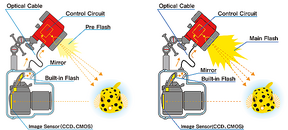Nitro91
Contributor
Ive got the nex-5 with a nautical and single inonz240 with optical setup. Strobe is on manual mode and I adjust light output on the strobe. What's difference between s-ttl and manual
Welcome to ScubaBoard, the world's largest scuba diving community. Registration is not required to read the forums, but we encourage you to join. Joining has its benefits and enables you to participate in the discussions.
Benefits of registering include
danny.hightower
I do macro shots and at the moment I use a Canon S95 with a +6 diopter on the Ikelite housing. Just wanted to know if this Taiwan made housing could fulfill this function. So, my idea is to stack my 67mm diopter onto the lens port if it has the 67mm thread.
Ive got the nex-5 with a nautical and single inonz240 with optical setup. Strobe is on manual mode and I adjust light output on the strobe. What's difference between s-ttl and manual
S-TTL works very well with Canon housing and the INON S2000 no wires, no lines at all

Ive got the nex-5 with a nautical and single inonz240 with optical setup. Strobe is on manual mode and I adjust light output on the strobe. What's difference between s-ttl and manual
What I DO NOT get - is the "wireless" setup of the INON S200 - how does that work?
Each strobe has it's own built-in light sensor?
Yes the new strobes have something like a sensor which sees the light from the OB flash and then fires. Thats what i was talking about in my previous posts that people didnt seem to like.

